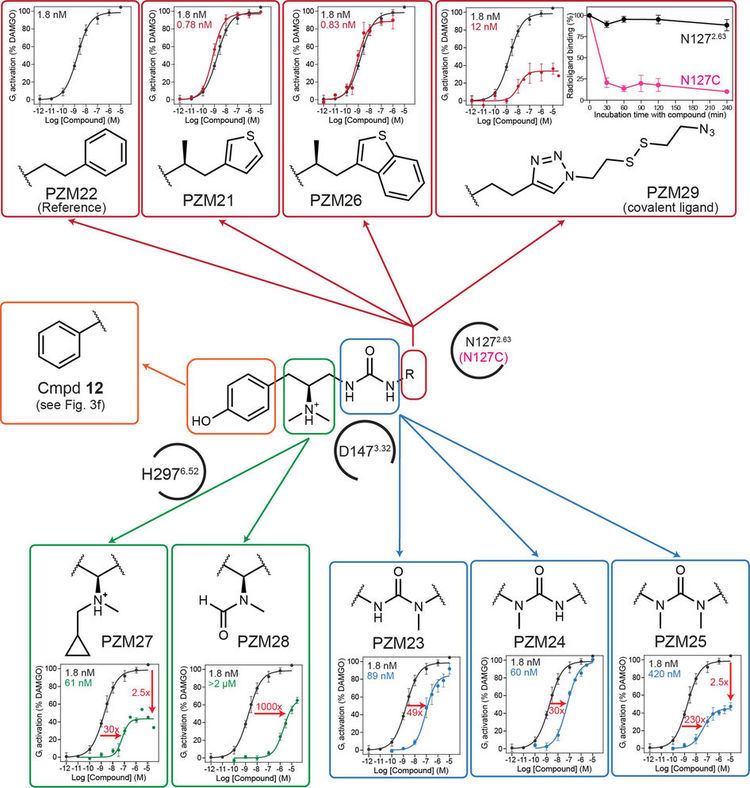CAS Number 1997387-43-5 Molar mass 361.50 g·mol | Formula C19H27N3O2S 3D model (Jmol) Interactive image | |
 | ||
PZM21 is an experimental opioid analgesic drug that is being researched for the treatment of pain. It is claimed to be a functionally selective μ-opioid receptor agonist which produces μ-opioid receptor mediated G protein signaling, with potency and efficacy similar to morphine, but with less β-arrestin 2 recruitment. In tests on mice, PZM21 was slightly less potent than morphine or TRV130 as an analgesic, but also had significantly reduced adverse effects, with less constipation than morphine, and very little respiratory depression, even at high doses. This research was described as a compelling example of how modern high-throughput screening techniques can be used to discover new chemotypes with specific activity profiles, even at targets such as the μ-opioid receptor which have already been thoroughly investigated.
Rather than trying to change the structure of morphine, the researchers of the new study looked at how they could develop a new opioid from scratch by using information about the structure of the brain's morphine receptor - the mu-opioid receptor.
Co-senior author Dr. Brian Koblika, of Stanford University School of Medicine, deciphered the atomic structure of this receptor back in 2012.
"With traditional forms of drug discovery, you're locked into a little chemical box," says Shoichet. "But when you start with the structure of the receptor you want to target, you can throw all those constraints away. You're empowered to imagine all sorts of things that you couldn't even think about before."
